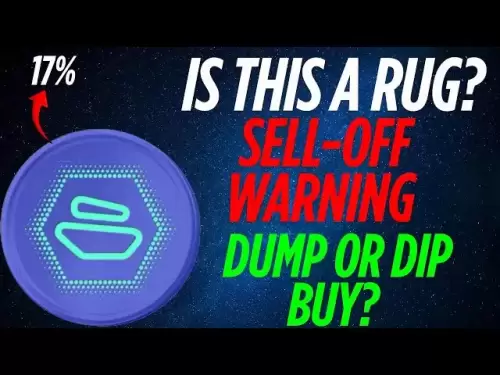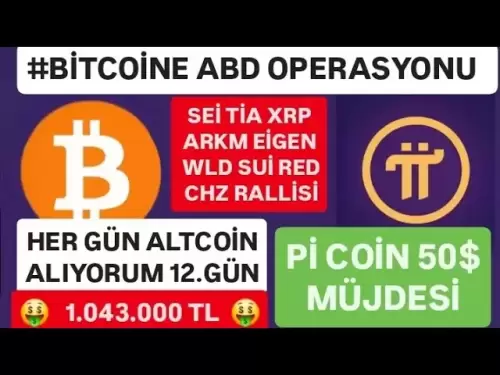-
 Bitcoin
Bitcoin $107,810.8710
-1.45% -
 Ethereum
Ethereum $2,531.4386
-1.75% -
 Tether USDt
Tether USDt $1.0000
-0.03% -
 XRP
XRP $2.2542
-0.99% -
 BNB
BNB $659.1350
-0.50% -
 Solana
Solana $148.5456
-2.40% -
 USDC
USDC $0.9999
-0.02% -
 TRON
TRON $0.2868
-0.44% -
 Dogecoin
Dogecoin $0.1666
-3.65% -
 Cardano
Cardano $0.5751
-2.36% -
 Hyperliquid
Hyperliquid $37.6845
-5.51% -
 Bitcoin Cash
Bitcoin Cash $494.9448
-0.65% -
 Sui
Sui $2.8396
-3.31% -
 Chainlink
Chainlink $13.2423
-2.59% -
 UNUS SED LEO
UNUS SED LEO $9.0482
0.02% -
 Stellar
Stellar $0.2467
-2.44% -
 Avalanche
Avalanche $17.8165
-3.63% -
 Shiba Inu
Shiba Inu $0.0...01158
-2.41% -
 Toncoin
Toncoin $2.7397
-3.42% -
 Hedera
Hedera $0.1560
-2.73% -
 Litecoin
Litecoin $85.8559
-2.34% -
 Monero
Monero $315.3710
-2.30% -
 Dai
Dai $1.0001
0.00% -
 Polkadot
Polkadot $3.3443
-2.03% -
 Ethena USDe
Ethena USDe $1.0001
0.01% -
 Bitget Token
Bitget Token $4.2888
-3.73% -
 Uniswap
Uniswap $7.3388
-1.57% -
 Aave
Aave $278.2986
-3.05% -
 Pepe
Pepe $0.0...09807
-3.67% -
 Pi
Pi $0.4563
-2.39%
How to participate in Bitfinex's liquidity mining?
Earn rewards by providing liquidity to Bitfinex's order book through their liquidity mining program; ensure you meet the requirements and monitor your orders regularly.
Apr 23, 2025 at 09:42 am
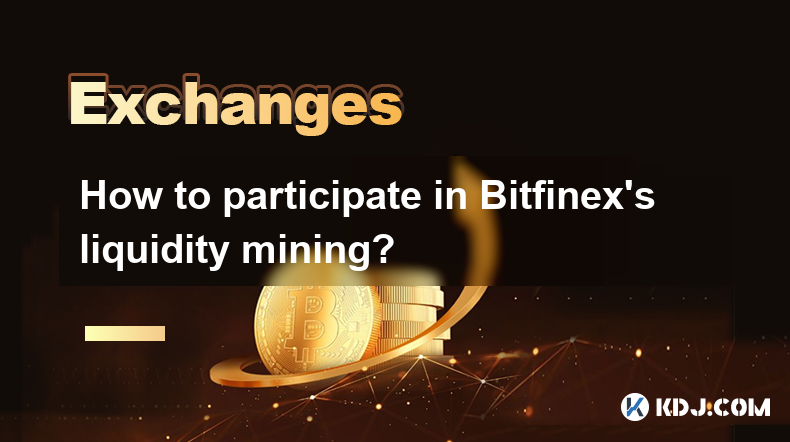
Participating in Bitfinex's liquidity mining can be an exciting way to earn rewards while contributing to the liquidity of the platform. This process involves providing liquidity to the exchange's order book, which helps to facilitate smoother trading for other users. In this article, we will guide you through the steps and requirements to participate in Bitfinex's liquidity mining program.
Understanding Liquidity Mining on Bitfinex
Liquidity mining on Bitfinex is a mechanism designed to incentivize users to add liquidity to the platform's trading pairs. By doing so, participants can earn rewards in the form of trading fees or other tokens. The primary goal is to enhance the trading environment by ensuring that there are always enough buy and sell orders available, which helps to reduce slippage and improve the overall trading experience.
Requirements for Participating in Liquidity Mining
To participate in Bitfinex's liquidity mining, there are certain prerequisites that you need to meet. First, you must have a verified account on Bitfinex. Verification involves submitting personal identification documents and passing the necessary checks. Additionally, you need to have sufficient funds in the cryptocurrencies you wish to provide liquidity for. It's important to ensure that you have enough balance to cover the required minimum order sizes.
Setting Up Your Bitfinex Account for Liquidity Mining
Before you can start providing liquidity, you need to set up your Bitfinex account correctly. Here’s how you can do it:
- Log into your Bitfinex account: Ensure you are logged into your verified account.
- Navigate to the Trading section: Once logged in, go to the trading section where you want to provide liquidity.
- Select the trading pair: Choose the specific trading pair for which you want to add liquidity. Bitfinex offers various trading pairs, so select one that aligns with your investment strategy.
Placing Liquidity Orders
Once your account is set up, you can start placing liquidity orders. Liquidity orders are typically placed as limit orders on both the buy and sell sides of the order book. Here’s how to place these orders:
- Open the order form: Click on the trading pair you selected and open the order form.
- Choose the order type: Select 'Limit' as the order type.
- Set the price and amount: For the buy order, set the price slightly below the current market price, and for the sell order, set it slightly above. The amount should meet the minimum order size requirement set by Bitfinex.
- Submit the orders: After setting the price and amount, submit your buy and sell orders. These orders will now be visible in the order book, contributing to the liquidity of the trading pair.
Monitoring and Adjusting Your Liquidity Orders
Providing liquidity is not a set-and-forget process. Monitoring your orders is crucial to ensure they remain competitive and effective. Here are some tips for monitoring and adjusting your orders:
- Regularly check your orders: Keep an eye on the market prices and adjust your orders accordingly to maintain competitiveness.
- Use the Bitfinex trading interface: The platform provides tools to help you track your orders and the overall market conditions.
- Adjust the order sizes and prices: If the market moves significantly, you may need to adjust your order prices and sizes to stay relevant in the order book.
Earning Rewards from Liquidity Mining
As you provide liquidity to the Bitfinex platform, you can earn rewards in various forms. Rewards can include a portion of the trading fees generated from the trades that execute against your liquidity orders. Additionally, Bitfinex may offer special promotions or token rewards for participants in their liquidity mining program.
- Track your earnings: Use the Bitfinex platform to monitor the rewards you are earning from your liquidity orders.
- Withdraw or reinvest: Decide whether to withdraw your earnings or reinvest them into providing more liquidity.
Frequently Asked Questions
Q: Can I participate in liquidity mining on Bitfinex with any cryptocurrency?
A: No, Bitfinex specifies which trading pairs are eligible for liquidity mining. You should check the platform's guidelines to see which pairs are currently supported.
Q: What happens if my liquidity orders are not filled?
A: If your liquidity orders are not filled, they will remain in the order book until they are either filled or canceled by you. It's important to monitor and adjust your orders to increase the likelihood of them being filled.
Q: Is there a risk involved in providing liquidity on Bitfinex?
A: Yes, there is a risk involved. Market volatility can lead to potential losses if the market moves against your orders. It's essential to understand these risks and only provide liquidity with funds you can afford to lose.
Q: How often should I adjust my liquidity orders?
A: The frequency of adjustments depends on market conditions. In highly volatile markets, you may need to adjust your orders more frequently to stay competitive. In more stable conditions, less frequent adjustments might be sufficient.
Disclaimer:info@kdj.com
The information provided is not trading advice. kdj.com does not assume any responsibility for any investments made based on the information provided in this article. Cryptocurrencies are highly volatile and it is highly recommended that you invest with caution after thorough research!
If you believe that the content used on this website infringes your copyright, please contact us immediately (info@kdj.com) and we will delete it promptly.
- BlockDAG Leads the Web3 Race with Sports Partnerships and Strategic Pricing
- 2025-07-08 10:50:12
- Pepe, Dogecoin, Shiba Inu: Meme Coin Mania or Calculated Crypto?
- 2025-07-08 10:30:12
- Bitcoin, Ethereum, and Tariff Tussles: Decoding the Crypto Market's Latest Moves
- 2025-07-08 10:30:12
- BOOM Airdrop 2025: Claim Tokens and Join the Web3 Revolution
- 2025-07-08 10:35:12
- Ethereum, Exchanges, and Price Resilience: Navigating the Crypto Landscape
- 2025-07-08 08:30:13
- Bitcoin's NVT Golden Cross: Is a Local Top Brewing?
- 2025-07-08 09:10:11
Related knowledge
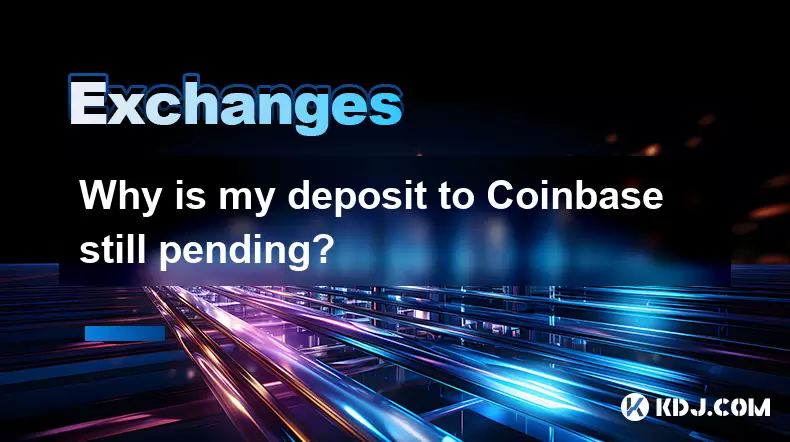
Why is my deposit to Coinbase still pending?
Jul 08,2025 at 11:14am
Understanding Pending Deposits on CoinbaseIf you've initiated a deposit to your Coinbase account and it's showing as pending, there could be several reasons behind this status. A pending deposit typically means that the transaction has been broadcasted or initiated but hasn't yet received enough confirmations from the blockchain network to be finalized....

Why is my Coinbase account restricted?
Jul 08,2025 at 11:01am
Account Verification and Identity RequirementsOne of the most common reasons a Coinbase account becomes restricted is due to incomplete or unverified identity information. Coinbase requires users to complete Know Your Customer (KYC) procedures, which include submitting government-issued identification documents, proof of address, and sometimes selfies f...

How to recover a lost Binance account
Jul 07,2025 at 09:07pm
What Happens When a Binance Account Is Lost?Losing access to your Binance account can be a distressing experience, especially if you hold significant digital assets. This typically occurs due to forgotten login credentials, loss of two-factor authentication (2FA) devices, or compromised accounts. Understanding the exact reason behind losing access is cr...
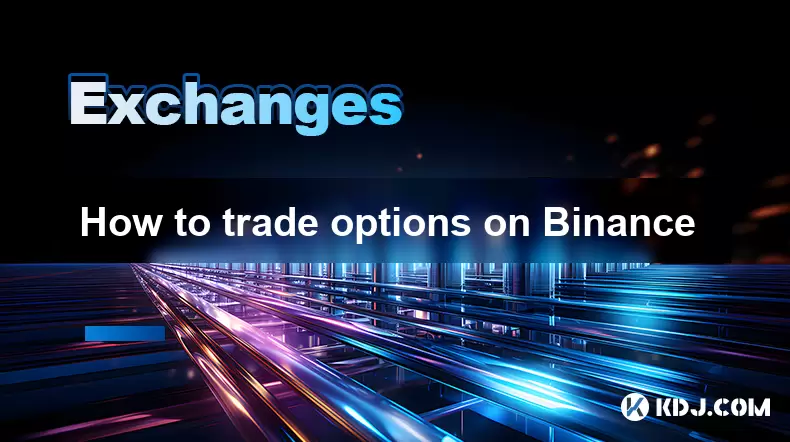
How to trade options on Binance
Jul 08,2025 at 04:35am
Understanding Options Trading on BinanceOptions trading allows investors to speculate on the future price of an asset without owning it. On Binance, users can trade crypto options, which are derivative contracts that give traders the right—but not the obligation—to buy or sell a cryptocurrency at a predetermined price before a specific date. This form o...
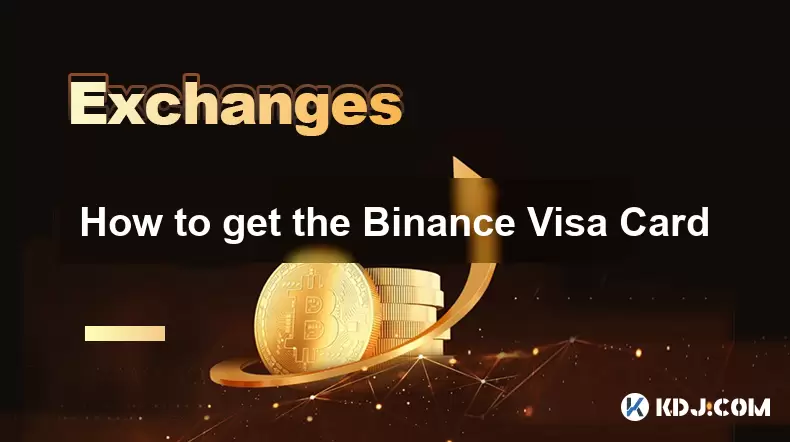
How to get the Binance Visa Card
Jul 08,2025 at 07:36am
What Is the Binance Visa Card?The Binance Visa Card is a cryptocurrency-linked payment solution that allows users to spend their digital assets in everyday transactions. Whether you're purchasing groceries, booking travel, or shopping online, this card enables seamless integration of crypto into your financial lifestyle. Unlike traditional debit or cred...

How to read Binance charts
Jul 07,2025 at 08:14pm
Understanding the Basics of Binance ChartsReading Binance charts effectively is essential for making informed trading decisions in the cryptocurrency market. Before diving into technical indicators and candlestick patterns, it's important to understand the basic layout of a chart on the Binance platform. The default chart interface displays price moveme...

Why is my deposit to Coinbase still pending?
Jul 08,2025 at 11:14am
Understanding Pending Deposits on CoinbaseIf you've initiated a deposit to your Coinbase account and it's showing as pending, there could be several reasons behind this status. A pending deposit typically means that the transaction has been broadcasted or initiated but hasn't yet received enough confirmations from the blockchain network to be finalized....

Why is my Coinbase account restricted?
Jul 08,2025 at 11:01am
Account Verification and Identity RequirementsOne of the most common reasons a Coinbase account becomes restricted is due to incomplete or unverified identity information. Coinbase requires users to complete Know Your Customer (KYC) procedures, which include submitting government-issued identification documents, proof of address, and sometimes selfies f...

How to recover a lost Binance account
Jul 07,2025 at 09:07pm
What Happens When a Binance Account Is Lost?Losing access to your Binance account can be a distressing experience, especially if you hold significant digital assets. This typically occurs due to forgotten login credentials, loss of two-factor authentication (2FA) devices, or compromised accounts. Understanding the exact reason behind losing access is cr...

How to trade options on Binance
Jul 08,2025 at 04:35am
Understanding Options Trading on BinanceOptions trading allows investors to speculate on the future price of an asset without owning it. On Binance, users can trade crypto options, which are derivative contracts that give traders the right—but not the obligation—to buy or sell a cryptocurrency at a predetermined price before a specific date. This form o...

How to get the Binance Visa Card
Jul 08,2025 at 07:36am
What Is the Binance Visa Card?The Binance Visa Card is a cryptocurrency-linked payment solution that allows users to spend their digital assets in everyday transactions. Whether you're purchasing groceries, booking travel, or shopping online, this card enables seamless integration of crypto into your financial lifestyle. Unlike traditional debit or cred...

How to read Binance charts
Jul 07,2025 at 08:14pm
Understanding the Basics of Binance ChartsReading Binance charts effectively is essential for making informed trading decisions in the cryptocurrency market. Before diving into technical indicators and candlestick patterns, it's important to understand the basic layout of a chart on the Binance platform. The default chart interface displays price moveme...
See all articles

























